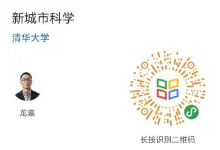小秘书:
城市空间对人们健康的影响,能否运用新的信息技术技术来测量和研究?善于做体育规划的德国,在这方面也不会落于人后。以下是对德国达姆施塔特工业大学建筑系城市健康游戏研究组(Urban Health Games,UHG)主持教授Martin Knöll教授的访谈。采访者李洋是德国达姆施塔特工业大学建筑系博士研究生,城市设计与城市发展研究组(EST)成员。
原文首发于《北京规划建设》杂志2016年第6期。经作者与杂志授权转载。

LY=李洋,MK=Martin Knöll
01 Concept of “Urban Health Games”
城市健康游戏的概念
LY : For most readers, “urban health games” is still a new concept. Would you please firstly explain more about this concept?
对于大多数读者来说,“城市健康游戏”仍然是一个较新的概念。可否请您先简要解释一下这个概念?
MK: Urban Health Games (UHG) is a new approach in people-centered urban design, with a focus on promoting people’s health and wellbeing. It’s new as we put people first in our design process and at the same time experimenting with playful approaches and digital technology to research what matters to people in terms of urban design & health. This is where “urban health” meets “games”. We used a lot of gaming technologies to gain data about health and design, we also use these technologies to allow people to better understand the relationship between the urban environment and health.
城市健康游戏(UHG)是属于人本城市设计(people-centered/user centered urban design )范畴的新思路,其焦点在于促进人们的健康。它较新的地方在于,我们将人置于设计过程的前端,同时采用数字技术及“好玩儿”的方法进行实验,以此研究城市设计范畴中影响健康的因素。这就是“城市健康”与“游戏”的结合之处。我们用了很多游戏技术,来获取关于健康和设计的数据,我们也利用这些技术,来让人们学习城市环境与健康之间存在怎样的关系。

“城市健康游戏”概念图示 . Credit: UHG.
LY : Why is “game” important?
“游戏”的重要性在哪里?
MK: Design and health is such a serious matter that is serious to us as well. But in order to research it, we have to involve people/users. The best way to let people participate is to make the process interesting, or even fun for them. This is the meaning and importance of “games”. We may just call our group urban design & health as well, but we want to emphasize the people-centered approach.
设计和健康本身是一个严肃的问题,对我们(设计师)来说也是很严肃的。但为了研究它,我们必须涉及人/用户。让人们参与进来的最好方法是使这个过程有趣,甚至让他们觉得“好玩儿”。这是“游戏”的重要性所在。或许可以只是称作“健康导向的城市设计”,但我们要强调以人为本,因此“游戏”是很关键的组成部分。
LY : How has this concept been so far developed and perceived in the European (academic and practical) context?
目前为止,相关概念在欧洲或世界其他区域的发展状况如何?
MK: Design & Health is a long established academic topic, which is way more present in the US. You can imagine the various global health challenges such as diabetes, obesity, physical inactive lifestyles as well as various mental wellbeing, which is putting increasing pressure on the public health systems and policy makers. In the US, obesity rates, for example, are much higher than in continental Europe. So the US are I think about 10 years ahead in that aspect. They have departments in schools which specifically deal with the topic deign and health, and from all scales: from planning to urban design, to architecture. But slowly it seems to be coming to Europe. It is now certainly a big topic in the UK, which in in that aspect quite comparable to the US. In Germany today there are about 4 academic places on this topic, located in TU Dortmund, TU Berlin, TU Dresden, and what we are building at TU Darmstadt.
设计与健康是一个历史悠久的学术话题。目前,美国对这个课题的重视度很高。你可以想象,各种全球健康及卫生挑战——如糖尿病、超重、肥胖、非体力活动主导的生活方式而造成的问题,以及各种心理健康问题,这些都给公共健康系统和政策制定者造成越来越大的压力。在美国,肥胖率远高于欧洲大陆。所以,我想他们在这方面比欧洲领先大约10年左右。美国一些学术部门专攻设计与健康的相关课题,并覆盖各种尺度:从城市规划到城市设计,再到建筑设计。随着时间推移,相关研究开始在欧洲兴起。在英国相关领域,这已成为一个大的课题,规模与美国相似。在德国,如今共有4个主要学术机构从事这方面的专业研究,分别位于多特蒙德、柏林、德累斯顿,以及达姆施塔特。
In order to implement our playful concepts, we work together very close with the IT professionals and gaming experts such as the “serious games” group at Multimedia Communications Lab (KOM), that makes UHG Darmstadt actually the only group that is doing such researches and projects.
值得一提的是,为了实现过程的“有趣”,我们与信息技术学科、游戏开发专业的专家紧密合作。这也使得达姆施塔特工业大学的“城市健康游戏”研究组成为唯一以这种方式进行研究项目的部门。
02 Potentials of “Urban Health Games”
城市健康游戏的潜力
LY : Your interest on urban health games can be traced back to the time of your doctoral study – In your opinion, which special potentials could it have in contributing to contemporary urban space and life?
您对城市健康游戏的兴趣可以追溯到学生时期,在您看来,这个概念及其相关成果在改善城市空间与生活方面有什么特殊潜力?
MK: I started looking into the topic health actually from the time as I was doing my diploma thesis. I came also from a very personal reason that I myself am type I diabetic, I started to think of possibilities of taking care of my own health through means of design. This was 10 years ago. It is very interesting to see the development since then. I studied this topic in depth in my doctoral thesis and gradually developed the concept of urban health games. My doctoral thesis has mainly focused on the historical and theoretical studies of health and design (which can be dated back to the beginning of modern cities). Here at TU Darmstadt, I got the chance to develop this research group, building transdisciplinary cooperations between architects, planners, and health experts to see how far we can bring this idea and find new solutions for the global health challenges.
在我写作硕士毕业论文时,就开始关注和健康相关的课题。其中有一个非常个人化的原因:我自己也是I型糖尿病患者。我开始思考通过设计的方式关怀自身健康的可能性。这已经是十年前的事情了。从那时起,这个思想开始萌芽,并经历了有趣的发展。我的博士研究重点集中在健康和设计的历史和理论研究(可追溯到现代城市的开端)。在达姆施塔特,我有机会组建跨学科研究小组,结合建筑学、城市规划及健康领域的专业人员把城市健康游戏付诸实践。通过建立原型和相关研究,把这个想法继续向前推进,并为全球健康问题提供新的解决方案 。
We believe there is much potential, which we are still in the process of exploring. In a broader sense, such potentials are on one hand contributing to the making of better or healthier environments. The relationships that we find – for example, what makes people enjoy walking can be definitely put into design practice – which is important for us as architects. On the other hand, such potential is to help people themselves learn about the linkage between urban space and health, making them automatically more aware of the ways they can take care of themselves as well as the qualities of urban spaces, especially those “hidden” qualities which may not be sensed at the first sight. Thus the potential may have influences on both individual lives and public health. We are still in the phase of building case studies. All is documented so that we can offer suggestions to policy makers.
我们相信城市健康游戏及相关研究在改善城市生活方面有巨大潜力,尽管我们仍然在探索的过程中。从更广泛的意义上讲,这样的潜力一方面有利于促进更好或更健康的环境的形成:我们通过研究所发现的人与建成环境的关系,例如是什么让人们喜欢散步,这肯定能够直接应用到设计实践中——这对我们建筑师很重要。潜力的另一方面在于,城市健康游戏能够帮助人们了解自己所在的城市空间和健康状况间的联系,使他们自主意识到有利于自身健康的因素及关注相应的城市空间品质,尤其是那些日常生活中不易察觉,被“隐藏”起来的城市空间特质。因此,潜力在于会对个人生活方式和公众城市健康意识产生积极的影响。当前,我们仍然处在建立原型和案例研究的阶段。所有的研究过程都记录在案,以便我们能为决策者提供建议。
LY : It seems the new forms of media interactions, for example the use of smartphones, are implying a quite optimistic vision on the realization of these potentials especially in terms of public awareness.
新的媒体及信息互动方式,例如智能手机的普及使用,似乎为这些潜力的实现勾画出一个相当乐观的愿景,特别是在公众意识方面。
MK: That’s a good point. Especially in the health discipline but also in architecture, people are reserved towards digital technologies (but not only in those disciplines, you see it in the society in general). There seems to be a large generation gap as well: You have the feeling that people older than the millenials see the “pervasiveness” of digital technology quite critical. They say and I agree with them most of the time: “look, I am happy when I get home in the evening and can switch my smartphone off”. For a lot of people at first sight, digital technology, including digital games, are more of a health problem than a solution. We think, of course, we are giving away a lot of potential when we exclude digital technology from the spectrum of potential design solution. (Seriously, you can not exclude it anymore anyway.) So we try to respond this situation with integrated design. I think there is a big potential in using digital technologies to better understand how we are using the built environment. Smartphones are nowadays so powerful: they are both sensible to the environment (location etc.) and body movements and gestures, and information such as the photos that you take.
这是一个很好的观点。在健康学科,以及较传统的建筑学科,甚至在整个(欧洲)社会,人们对数字技术多少持有保守态度。而且似乎存在一个很大的代沟:你能感觉到在新千年前步入成年的人群普遍对数码设备的广泛使用持有批判态度。他们说(大部分时候我也同意):“我很高兴当我在晚上回到家,可以关闭我的智能手机了”。对于许多人,数字技术,包括数字游戏,在第一眼看来更像是健康问题的制造者而非解决方案。当然我们认为,当我们排斥数字技术在日常生活中的应用时(事实上你已经不再能拒绝它了),我们会失去其能够带来的巨大的积极可能性。所以,我们试图通过设计,影响这种情况。毋庸置疑,使用数字技术首先能够更有效地帮助理解我们是如何使用城市建成环境的。智能手机是如此强大,一方面它对环境(位置等相关信息)敏感,另一方面对使用者自身活动(移动轨迹、身体动作和手势等)敏感。另外,还可以储存纪录用户在特定环境中产生的信息,如人们拍摄的照片等。
03 Academic focuses of UHG
UHG的研究及教学重点
LY : Which are the specific academic focuses of UHG with TU Darmstadt, Department of Architecture? How are these focuses reflected in the teaching programs and research fields of UHG?
UHG研究组有哪些具体的研究重点?这些重点在研究与教学领域是如何体现的?
MK: One big topic is urban planning and its relation to walkability. How can we increase the level, quality of walking experience through design so that we become more “active” in our cities? We touch upon this in aspect of design measures (how public spaces or streetscapes can be designed so that people enjoy walking there). One of my PhD student’s research is especially on transitional spaces: how the spaces can be designed so that people may choose walking/biking instead of driving in transitional areas. This is the first topic in the wider context of how we are mobile in the city. It’s just a fact that we have to and want to be way more mobile in the city, the question is actually how can we be mobile and the same time be physical active.
一个大的主题是城市规划设计中的步行方便性。如何通过恰当的设计来提升特定区域步行体验的水平与空间质量,使我们在城市中变得更加“活跃”?主要的目标是开发设计策略,使公共空间或街景设计能够使人们享受在那里散步等。我的一个博士生的研究课题是交通换乘空间:如何设计,使人们更乐意选择步行/骑自行车,而不是驾驶私家车到达。这是第一个主题:更广泛意义上的城市中的机动性。我们都需要在城市中实现更便捷和高效的移动,但问题是如何同时实现尽可能多的身体运动。
Another topic concerns urban design and mental health. For example, we investigate which built environment factors relate to how stressed pedestrians feel in a public space 1. This topic is also very relevant in learning environments e.g. schools and universities. In many situations, people need breaks and open spaces to recover from the stressful situations of learning and working. We are focusing on studying the design features, which may contribute to the stressful feelings next to personal disposition, agenda and situation. Our aim is to predict people’s feeling and mental situation in a given urban space based on plan information, in order to influence and simulate outcomes.
另一个主题是城市设计和心理健康,研究的是人对环境的心理感知——或者说,环境如何影响使用者的心理状态。例如,令人产生焦虑感的城市空间特点及处于其中行人的心理、生理特征。这个课题的重要性还尤其体现在日常学习环境,如中小学/大学。在许多情况下,人们需要休息或开放的空间来从学习和工作的压力状态下恢复。我们研究重点在于找到环境中导致使用者心理焦虑的机制及因素,以此为改善空间设计提供依据,如我们之前共同完成的研究。这些研究成果,使得人们甚至可以在一个给定的城市空间规划信息的基础上,预测使用者在空间中的感受和心理状况。
In terms of teaching, we developed the first interdisciplinary courses in which students of architecture, IT and psychology may work together on projects2. The design brief of the project is to develop an urban health game – a digital tool which would, for example, stimulate you having an active lunch break. In an interdisciplinary teaching context, we can teach best if the people start to talk with each other, on that basis, a common language must be developed. It is not hard to imagine that even when architects/designers and people from other disciplines (such as social science or Information technology students) are mentioning the same words or terms, they may be talking about totally different things. It is an extremely interesting process, when these people are invited to talk with each other on the same project with a concrete goal such as developing a smartphone App. They try to find a common language and at the same time bring their own understandings and ideas in order to improve the App in the related perspectives: livability in the city, health benefits for the individual and usability. We have since then used parts of it in our “urban design & health” seminar and related design studios on inclusive design.
在教学方面,我们开发了第一个结合建筑/城市设计、信息技术及心理学的跨学科课程。该课程项目的成果,以一个城市健康游戏的形式体现,例如,一个引发使用者在午饭后进行适当身体运动及互动的APP。在跨学科的教学环境中,不同专业间的自由交流是达到良好教学效果的前提,因此必须通过磨合来发展一个共同的语言。不难想象,即使当建筑师/设计师和其他学科的人(如社会学科或信息技术的学生)提到相同的单词或术语,他们谈论的可能是完全不同的东西。因此,相互交流是一个非常有趣的过程:当这些人被要求在实现同一个具体的目标,如开发一个智能手机应用程序时,他们试图找到共同的语言来提出和阐述各自的理解和想法,以提高应用程序不同方面的性能,如城市的宜居性、个人健康获益及程序的可操作性等。这种教学形式在3年前形成并保留下来。从那时起,这个教学形式就在我们的“城市设计与健康”讨论课和设计课被部分使用。
04 Cases of projects
案例举例
LY : Would you introduce some examples of the projects done by UHG?
您能介绍一些具体案例吗?
MK: One example is called “the evacuation”. This project was done in 2014. It was a prototype for a smartphone game, which is supposed to work as a learning and a participation tool3. We used it in a case-study in Frankfurt, a big city very close to Darmstadt. The site area is right next to the European Central Bank by the river Main, which was neglected for a while but then very dynamically and rapidly developed. The site was commonly known as the “Automeile” the German word for “car mile” because the north site of the site is defined by a four-lane motor highway that goes from the city outskirt to the center. Along this “mile”, there is the highest density of motor vehicle shops (car-sale houses). On the south side, you have a beautiful open view over the river Main and the container harbor, which is no more active today. We saw the potential of redefining that area in terms of urban development. We can possibly add something to the “Automeile” – which is more on the line of pedestrian friendly environment, having a lot of amenity qualities, having something like a restorative environment where people can relax and more socially active to each other. This is the background.
这个案例被称为“Evacuation”,是2014年完成的。这是一个智能手机游戏的原型,也可以说是一个参与性的工具。我们选取法兰克福的一块场地做案例研究。法兰克福是非常接近达姆施塔特的大城市,场地位于美因河畔紧邻现欧洲中央银行所在地。这片地区由于不在城市中心,因此在城市发展历史上被忽视了一段时间,但最近发展非常迅速。该地区在当地被称为“Automeile”,意即“汽车英里”,因为场地北边缘由一条从城市边缘直通到市中心的四车道的高速公路限定。沿着这条“汽车英里”,密集分布着多个汽车商店(汽车销售公司)。场地南侧拥有美因河美丽的开放视野,以及如今不再使用的集装箱港口。我们看到在城市发展角度重新定义该区域的潜力:我们可以为“Automeile”注入更加友好的步行空间,更多的设施及具有身心修复功能的环境,人们可以在其中得到放松,参与社交活动。这是该项目的背景。

“Evacuation”项目场地. Picture Credits: Mousonturm Frankfurt
The main question is: how to prototype a design/picture for an area which is not there yet, a picture that people don’t commonly experience when they are passing through. As smartphones can respond very well to its locations, we considered to develop an experience or a “showcase” for where we want people to go. It should be a very pedestrian friendly area. We considered what we still need to get there. So we developed a “route”, a circulation of about 1 km long. Along the route, individual “stations” have been arranged which could all, in different ways, trigger activities with the environment. These actions are always in response to certain architecture of that place. For example, on the river Main people may be guided by the App to sit on certain points and take breathing exercises, before and after that we measured their heart rate and show them that certain environment actually have the effect of reducing your heart rate, they can feel it there, in this moment, guided. The next station is for example at an old storage (depot) hall formally used for lorries. We took advantage of the long space and created an experience that people “pick up” something at the beginning and should balance it while doing gestures as suggested by the App until they reach the end of the space. As such we designed a whole variety of experiences and interactions within the site area.
我们在案例中思考的主要问题是: 如何通过游戏原型设计为用户及设计区域提供日常生活中无法感受到的体验与图景。由于智能手机可以很好地响应用户位置,我们考虑为区域内希望人们去的地点开发一种“体验”或“橱窗”,整个体验都应被规划在连续的步行友好的空间中。所以我们根据场地状况开发了一条约一公里长的“路线” 。沿着这条路线安排了若干“站点”,到达这些站点后,用户可以在智能手机帮助下以不同的方式,触发与其所处环境的互动。这些活动往往是对现场的某些建筑或建成环境的反应。例如,在美因河畔,用户在应用程序引导下,坐在某些景观优美的地点进行呼吸练习。 我们测量并展示他们在活动前后的心率和相关生理指标,以表明某些环境确实有降低心率的作用,在这种即时引导下,人们能非常直接地感受到这种关联性 。下一站,在一个原先用于停放卡车的仓库。我们利用其狭长的空间设计了特殊的活动:人们在空间的起点“拿起”东西,按照设计的路径走向另一端,同时,在应用程序的指导下完成各种身体动作,并保持所持物体的平衡,直到他们到达终点。顺利完成一项活动,参与者会获得相应的积分奖励,以此引入轻微的竞争来鼓励大众参与活动。诸如此类,我们设计了一系列不同的体验和与环境的健康互动。


“Evacuation”项目用户界面及活动照片. Credit: UHG.
By the end, we had a workshop and asked people how do they experience the city today by using our game, and what they have noticed (aware of) that they usually don’t. There were residents and there were also people, who have never seen this place. The residents have reported that they have seen a lot of things that they don’t see and haven’t realized before. We have successfully made the local residence rediscovery and re-experience certain features of the architecture and the city. Moreover, these rediscovery and re-experience are always related to activities and healthy places. The project evacuation was a prototype, however, a lot of work has been done to make every happen. The results were exciting. What we have seen is that the learning effect among the public was very good.
项目最后,我们举办了一个小的研讨会,询问人们通过使用我们的游戏对该区域的体验如何,以及他们是否注意到之前未曾注意的事物。其中有些用户从未到过此地。根据居民的反馈,他们在场地中看到或感受到了很多之前并没有意识到的东西。通过游戏,我们成功地使当地居民重新发现和体验某些城市的建筑与建成区域。另外,重要的是,这些重新发现和重新体验的过程总是和健康有益的活动与场所结合。“Evacuation”项目虽然只是一个原型,但是,为了使全部机制顺利运行,在前期还是投入了大量工作。结果是令人兴奋的,并且我们看到公众的学习效果很好。
05 Role of UHG in urban practice
城市健康游戏的定位及未来展望
LY : How do you define the relationship between (the work of) UHG and classical urban planning/urban design disciplines?
您如何看待城市健康游戏与经典建筑/城市设计与城市规划学科的关系?
MK: Our projects contribute to academic discourses, but it can definitely also contribute to practices in the community. I think architecture as a research discipline is changing a lot nowadays. Each faculty and university seeks for defining the role of research in architecture. As architects, we want to bring the results into application. We are very problem-driven. Adopting and mixing methods from other disciplines is the unique and natural way of in the academia related to architecture and urban space. In this sense, we seek to develop perspectives how architecture and urban space can be studied.
我们的项目有助于学术讨论,但它同时也可以为社区设计实践做出贡献。我想,当代建筑学或城市设计,作为一个研究领域正处于变革之中,每个学院和大学都试图从自己的角度定义研究在建筑与城市设计领域扮演的角色。作为建筑师或城市设计师,我们注重把成果转化为应用,要解决实际问题。作为综合学科,采用及混合使用各种跨学科的方法是建筑和城市空间研究的应有特点。在这个意义上说,城市健康游戏试图为经典建筑及城市设计学科研究及实践提供新的发展视角。
LY : Would you introduce the next steps of the research group UHG and the key existing barriers?
请您讲一下城市健康游戏研究组的下一步计划及需要克服的障碍。
MK: In planning practice, there are a few challenges. These challenges are also reflected in the education of architecture and urban design. The design process is not yet very much data driven. Besides, as our work itself is so interdisciplinary, there might be difficulties in transferring our academic methods to the real world solutions and practitioners. For short, we need to make sure that the tools we offer must be easy to use, to make it adaptable for practitioners. We are still not there yet and are thinking of ways to deploy our tools.
在规划实践中,有一些需要克服的挑战与困难。这些挑战也反映在建筑和城市设计的教育中,设计(教育及实践)过程中还没有非常多的数据驱动。此外,由于我们的工作本身的跨学科性质,将我们的学术成果转化为现实世界从业者的解决方案的过程还存在困难。简言之,我们需要确保所提供的工具易于相关从业者使用。我们还没有达到这个目标,但正在向这个方向努力。
Developing an assessment tool, for example, can be very useful for future planner and architects so that they can have a grounded data-driven site analysis. But developing such tools is a slow process and you need professionals from all related aspects to make it work. Big commercial companies can take advantage of huge amount of user feedbacks to test their Apps. In comparison to that, small research groups have their limitation in this aspect. So as next step we are setting out to find enterprise partners which can help to test our prototypes in a larger scale, and thus to take the development of urban health games a step further.
例如,开发一个建成环境评估工具,可以对未来的规划师和建筑师非常有用,使他们在进行设计前就可以有一个详尽且量化的场地分析。但是,开发这样的工具是一个缓慢的过程,需要所有相关方面的专业人员配合工作才能实现。大的商业公司可以利用大量的用户反馈来测试他们的应用程序。比较而言,小的研究机构在这方面有自己的局限性。因此,下一步我们开始寻找企业合作伙伴,可以帮助我们的原型在更大的规模进行测试,使城市健康游戏的发展更进一步。
相关链接:www.stadtspiele.tu-darmstadt.de
https://www.researchgate.net/profile/Martin_Knoell
参考文献:


 规划问道
规划问道









